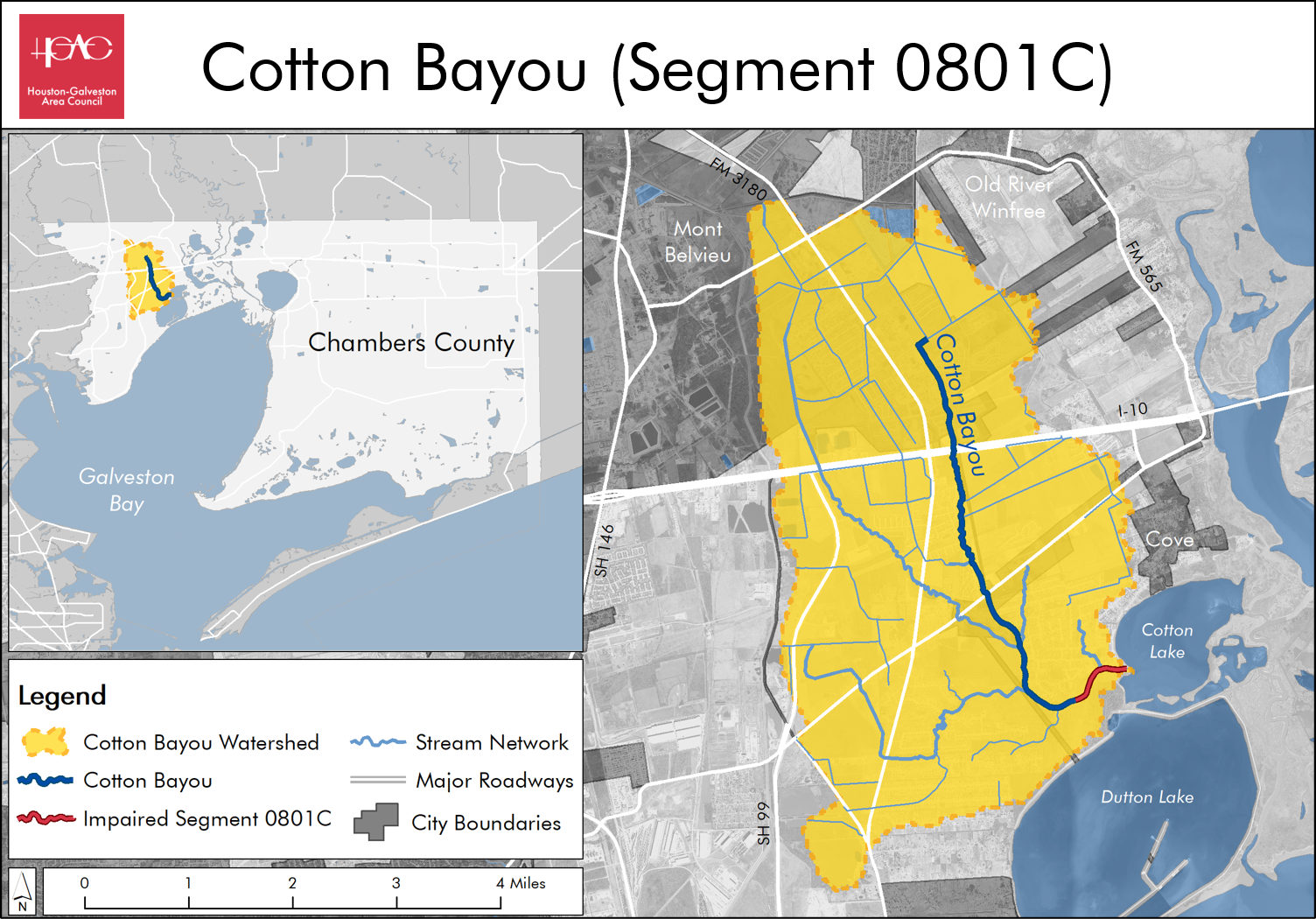On This Page
The Houston-Galveston Area Council is working with stakeholders in the Cotton Bayou Watershed to improve water quality by characterizing the area, identifying sources of bacteria, and developing a Total Maximum Daily Load (TMDL) for the watershed.
Watershed Characteristics
Cotton Bayou is a stream segment in Chambers County located between Cotton Lake and an area approximately one mile north of Interstate 10 in Mont Belvieu. Approximately 40 miles of stream network including the main tributary, Hackberry Gully, drain into Cotton Bayou. The 16 square mile watershed area includes portions of the cities of Mont Belvieu, Cove and Old-River Winfree as well as parts of Beach City and Baytown.
About the Project
Pollution pressures from natural sources, and sources related to development and agriculture present challenges to water quality in Cotton Bayou. Analyses of surface water show that pollution from these sources has led to fecal waste contamination indicated by elevated levels of bacteria which represents a health risk to people who come into contact with surface water during recreation activities such as swimming or wading. These analyses also showed that oxygen levels are sometimes insufficient to support aquatic life.
The Houston-Galveston Area Council (H-GAC) was tasked by the Texas Commission on Environmental Quality (TCEQ) to describe trends in bacteria concentrations and their potential causes in the Cotton Bayou Watershed Characterization Report. These analyses will be explored further through the development of a Technical Support Document.
These are the first steps in a multi-year project working toward determining the level to which bacteria concentrations need to be reduced to comply with state water quality standards, also known as a TMDL. By combining scientific analyses of surface water monitoring data with stakeholder knowledge, an assessment of current water quality conditions and goals for improvement will be developed. Stakeholder involvement will be an important part of the decision-making process for developing reduction strategies to achieve these goals.
Click on the image above for a full size version.
Public Meetings
No public meetings are currently scheduled.
Past Meeting Materials
Materials and information for previous and upcoming project meetings can be viewed with the links below. We invite you to join us for future meetings and encourage you to contact us with any questions or feedback.
April 28, 2020
( 3)

August 20, 2020
( 3)

July 13, 2021
( 3)

May 31, 2022
( 3)

August 23, 2022
( 3)

January 26, 2023
( 3)

March 9, 2023
( 3)

July 27, 2023
( 3)

June 17, 2024
( 3)



